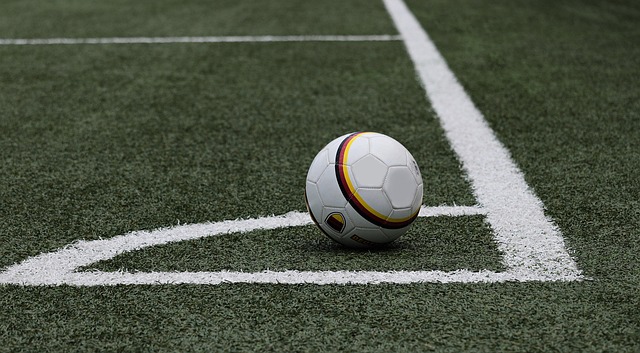Introduction: Why Strategy Analysis Matters
If you don’t know who you’re up against, you’re playing blind. And in serious competition, that’s how you lose. Great teams and players don’t just train—they study. They study the opposition’s patterns, their habits, the moments they crack under pressure. Every strong performance starts with understanding what’s coming.
Preparation isn’t just reps or drills. It’s watching tape, spotting tendencies, and figuring out how your strengths line up with their weaknesses. It’s not flashy work. But it’s the kind of work that makes sure your talent doesn’t go to waste on game day.
In the real world, effective analysis means more than a quick scan of stats. It’s about knowing the story those stats tell—how a team functions in the clutch, what they fall back on when plan A fails. That’s the edge. The difference between reacting and anticipating. Between showing up and showing out.
Step 1: Collect the Right Data
Before you can beat an opponent, you need to see how they actually operate. Start with the basics: watch for formations, recurring patterns, and tendencies. How do they open a game? Where do they like to attack? What do they fall back on when under pressure? You’re not trying to memorize every play—they won’t run the same script twice. You’re looking for habits that reveal how they think.
Use every tool you’ve got. Game footage should be your bread and butter—rewatch it with purpose. Scouting reports add perspective, especially when you’re short on time or have limited film. But if you can, watch them live. Real-time observation reveals pace, energy, body language—the stuff cameras sometimes miss.
Cut the noise. Don’t get distracted by highlight plays or flashy moments. Focus on what’s repeated. That’s where teams show their true face. You’re not chasing perfection—you’re building a mental playbook you and your squad can act on.
Step 2: Break Down Opponent Strengths & Weaknesses
It starts with recognizing what your opponent leans on when it matters. Every team has go-to plays—the ones they default to under pressure. Maybe it’s a quick counterattack. Maybe it’s isolating their top scorer on a mismatch. Spot those patterns early. Then, drill into which players consistently deliver in clutch moments. Ask: who takes the last shot? Who makes the key stop?
From there, look for holes. Overused strategies become predictable. Some teams can’t cover wide, or break down when defending in transition. Others gas out late in tight matches. Watch for the signs—sloppy footwork, poor decisions, hesitations. Pressure reveals a team’s wiring. Do they double down on their strengths or scramble to improvise?
You’re not just looking for what they do. You’re watching how their game shifts when the temperature rises. That’s where the edge lives—in the gap between their plan and their panic.
Step 3: Match Their Strategy Against Your Team’s Assets
Once you’ve broken down the opponent, flip the lens—what do you do well? Don’t try to copy someone else’s blueprint. Work with the strengths you already have. Got speed on the outside? Stretch their defense. Strong interior play? Force them inside and grind it out. The goal isn’t to play perfect—it’s to play your style, better than they can handle.
Predictability is your ally when it’s not yours. If the other team always leans on a certain coverage or formation in key moments, exploit it. Patterns emerge under pressure—use them. Watch for those repeat calls off timeouts, the same setups after turnovers, or players who always force left.
Then comes role assignment. It needs to be deliberate. Don’t just toss players into spots they’re used to. Look at matchups. If your point guard eats slower defenders alive, isolate that. If your big can’t defend the perimeter, don’t switch screens—hedge and recover. Strategically mismatching doesn’t always mean putting your best against their worst. Sometimes it means forcing their best into situations they hate the most.
Bottom line: know what you’ve got, know what they’ll give, and press where it hurts.
Step 4: Create a Game Plan With Built-in Flexibility
A well-crafted strategy is critical—but only until the game begins. Once the whistle blows, the ability to adapt beats any static plan. The best teams don’t just execute plays—they evolve them in real time.
Strategy Meets Reality
- Game dynamics shift quickly—injuries happen, momentum swings, unexpected plays emerge
- A rigid plan can fall apart fast if there’s no room to adjust
- Build flexible frameworks, not fixed formulas
Design for Adaptability
When outlining your game plan:
- Include alternate plays in response to opponent reactions
- Create systems with decision points rather than predetermined outcomes
- Allow leaders on the field to make live adjustments within a trusted structure
Teach the “Why,” Not Just the “What”
To make flexibility work, players must understand the reasoning behind your strategy:
- Encourage situational awareness—teach them to read cues and adjust
- Explain the purpose of each play or formation so players know how to adapt it
- Reinforce critical thinking in practice, not just repetition
When players understand the logic, they’re better prepared to improvise with purpose—not panic under pressure.
Step 5: Train for Execution Under Game Conditions
Watching film and building a smart game plan only gets you halfway there. Execution is what wins. That means practice has to mimic real pressure and real patterns. Start by simulating opponent behaviors—set up drills where your team sees the same formations and tendencies they’ll face on game day. Make the reps tight and specific. Don’t waste time on generic scrimmaging with no purpose.
Next, lock in those mental triggers. Your team needs to know exactly what to do when they see a familiar setup: “if they press left, we rotate right,” or “if they blitz early, shift formation fast.” These decision trees should feel automatic. No hesitation.
Finally, keep it sharp. Long, drawn-out sessions drain attention and dilute impact. Aim for short drills with high intention. Crisp intensity over sloppy volume. This is about embedding instincts, not just going through the motions. When the whistle blows, the team shouldn’t think—they should already know.
Bonus: Watch Yourself Too
You’re not just watching them—they’re watching you. If you’re not self-scouting, you’re leaving yourself exposed.
Opponents zero in on patterns. If you always lean left before a drive, or call the same setup on third downs, they’ll jump it. The fix? Break your own habits before someone else uses them against you.
Treat your own footage like it belongs to a rival. Watch it without ego. Where are the giveaways? What feels stale? What do you do too often because it’s comfortable? Then change it. Mix up your timing, adjust your cues, scrap the autopilot routines.
Solid strategy isn’t just about finding the flaws in others. It’s about eliminating your own. The best teams don’t just study film—they weaponize it, even when it’s their own.
Wrapping It Up: Strategy Is a Living Process
Game over? Not really. Every match is a data point—every win, every misstep. The tape tells a story if you’re willing to watch it close. The best teams take that story and rewrite their next chapter fast. They review, tweak, and refine from week to week, always adjusting, always improving.
Just reacting isn’t enough anymore. High-performance teams know how to see what’s coming. They recognize patterns before they form and prep counters before they’re needed. This isn’t about guessing—it’s about reading the signs and planning ahead.
Strategic thinking doesn’t end when the whistle blows—it evolves. Stay sharp. Stay humble. And above all, stay ahead.
Learn more about performance fundamentals over at Essential Tips for Improving Athletic Performance




